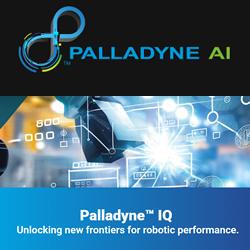Robot Octopus Takes to the Sea
From Evan Ackerman at IEEE Spectrum:
The video below has four parts to it: the first shows the difference between the robotic octopus swimming with just flexible arms, and swimming with just flexible arms in addition to a web. The most obvious difference is the speed: just over 100 millimeters per second with arms only, and up to 180 mm/s (or 0.5 body lengths per second) with the web. This is a significant increase, obviously, but what's more important is the overall cost of transport (CoT), which is a measure of the efficiency of the robot (specifically, the ratio of the energy put in over the resulting speed). The CoT for the arms-only version is 0.85, whereas the web drops that down to 0.62. So yeah, having that web in there is better in almost every way... (cont'd)
Comments (0)
This post does not have any comments. Be the first to leave a comment below.
Featured Product

